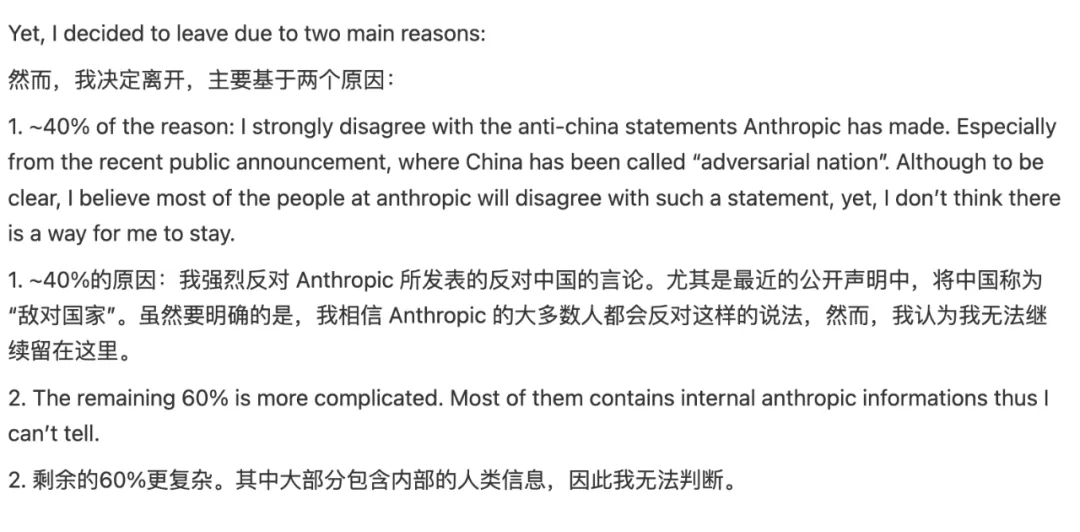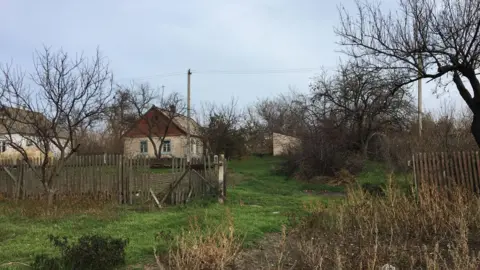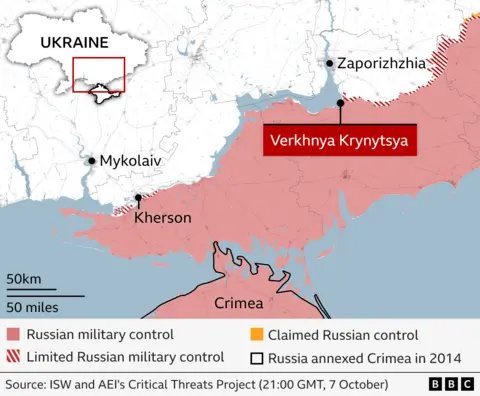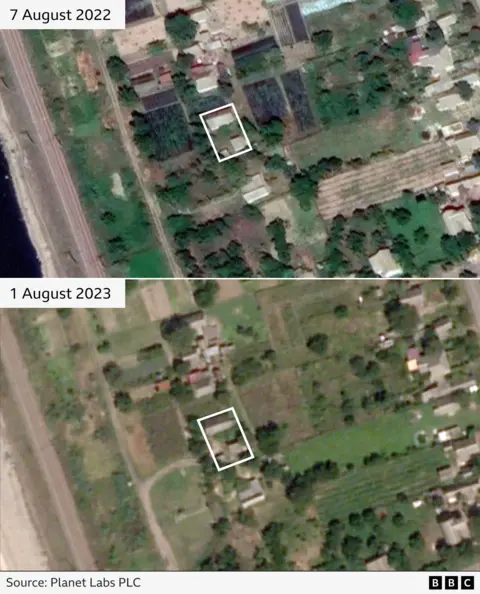Posts Calling Luigi Mangione Guilty Did No Harm, Top U.S. Prosecutor Argues

© Jefferson Siegel for The New York Times

© Jefferson Siegel for The New York Times


简配版 Model Y/3 正式发布

2025 年诺贝尔化学奖公布

大疆宣布降价,已购消费者退货维权登上热搜

雷军:小米 17 系列首销成绩远超预期

OpenAI 多个重磅炸弹公布:ChatGPT 里直接装 App

中国科研团队突破全固态电池实用瓶颈

马斯克晒擎天柱机器人练功夫

清华物理天才姚顺宇官宣跳槽 DeepMind

Cursor 创始人:AI 编程处于漫长复杂的「中间阶段」

消息称 M5 iPad Pro 或即将推出

华为工程人员回应「鸿蒙 5 App 不适配」:有些群体别升级

霉霉新专电影票房破 4600 万美元

昨天,特斯拉正式在北美市场发布了旗下 Model Y/3 全新车型 ——「Standard」(标准版),先看售价:
随着标准版的出现,特斯拉对车辆的命名体系也做了调整,在入门标准版之上是 Premium (臻享) 版本,即原来的 Long Range(长续航版),再往上则是 Performance(性能版)。

外观方面,Model 3 标准版并未进行大幅度调整;Model Y 标准版则取消了标志的贯穿式灯带。标准版车型提供 18/19 寸轮毂,车身颜色则仅有黑白灰三种颜色可选。另外,后视镜变为手动折叠。
内饰方面,标准版车型座椅材质更换为了织物材质,保留前排座椅加热,取消通风;方向盘调节更换为手动;后排触摸控制屏取消,变为手动空调出风口;扬声器均为 7 个(取消低音炮);移除 HEPA 过滤器和生物武器防御模式。
值得一提的是,Model Y 标准版取消掉了玻璃天幕以及电动后排座椅折叠;而 Model 3 标准版则保留了原来的天幕设计。

性能方面,标准版车型均为后驱电机,零百加速分别为 6.8 秒(Model Y)和 5.8 秒(Model 3);标准版电池采用 69.5kWh,续航里程为 516 公里,充电峰值功率被控制在 225kW。
相较原版本,两款新车分别降价约 5000 美元和 5500 美元。若按比例推算,其在中国市场的起售价可能分别下探至 23 万元与 20 万元左右。


10 月 8 日,瑞典皇家科学院宣布,将 2025 年诺贝尔化学奖授予 Susumu Kitagawa、Richard Robson 和 Omar M. Yaghi,以表彰他们在金属有机框架(Metal–Organic Frameworks,简称 MOF)领域的开创性贡献。
三位获奖者将平分 1100 万瑞典克朗(折合人民币 836 万元)奖金。
据了解,三名获奖者创造的金属有机框架(MOF)内部拥有巨大的空腔,分子可以自由进出。研究人员利用它从沙漠空气中提取水分,从水中去除污染物,捕获二氧化碳并储存氢气。
过去几十年里,全球各地的实验室研发出无数类似的结构。有的被设计用于捕捉二氧化碳,有的用于从水中分离全氟和多氟烷基物质(PFAS),还有的能在体内精准递送药物,或安全处理极度有毒的气体。有的 MOF 甚至可以吸附水果释放的乙烯气体,让它们更慢成熟;也有的能包裹分解环境中抗生素残留的酶。
简单来说,金属有机框架的用途极其广泛。Susumu Kitagawa、Richard Robson 和 Omar Yaghi 之所以荣获 2025 年诺贝尔化学奖,是因为他们首次创造出 MOF,并展示了其巨大的潜力。
正是由于三位获奖者的工作,化学家们才能设计出成千上万种不同的 MOF,推动了化学领域一个又一个奇迹的诞生。
诺贝尔化学委员会主席 Heiner Linke 表示:「金属有机框架具有巨大潜力,它为定制化功能材料带来了前所未有的可能性。」
另外,瑞典皇家科学院在 10 月 7 日宣布,将 2025 年诺贝尔物理学奖授予 John Clarke、Michel H. Devoret 和 John M. Martinis 三名量子物理学家,以表彰他们在电路中实现宏观量子力学隧穿效应和能量量子化方面的贡献。
诺贝尔物理学委员会当天表示,今年的诺贝尔物理学奖成果为开发量子密码学、量子计算机和量子传感器等下一代量子技术提供了可能。

10 月 6 日,瑞典卡罗琳医学院宣布,将 2025 年诺贝尔生理学或医学奖授予美国科学家 Mary E. Brunkow、Fred Ramsdell 和日本科学家 Shimon Sakaguchi,以表彰他们在外周免疫耐受机制方面的开创性发现。


日前,小米创办人雷军发文表示,小米 17 系列首销成绩远超预期。
据央视新闻报道,小米 17 系列凭借独特的「妙享背屏」创新、影像能力等,成为消费者新宠,开售仅 5 天销量破 100 万台。
另据博主数码闲聊站消息,小米 17 系列实际销售的激活量已破 70 万,同比强于前几代,全系线下销量是线上的 2-3 倍。
小米 17 系列于 9 月 25 日正式发布,共有小米 17、17 Pro 以及 17 Pro Max 三款机型,其中两款 Pro 机型拥有后置背屏设计;全系配备大容量电池、全新的徕卡影像系统;起售价分别为 4499 元、4999 元以及 5999 元。
小米 17 系列开售后,小米宣布新机全系开售 5 分钟,刷新 2025 年国产手机全价位段新机系列,首销全天销量、销额纪录。
据小米集团合伙人、总裁卢伟冰透露,三款新机中,小米 17 Pro Max 卖得最好,在全系中销量占比超过 50%。卢伟冰表示,「这说明小米靠持续创新上探超高端,赢得了大家的认可。」
据界面新闻报道,在发布会后的年度演讲及媒体采访中,小米创办人雷军表示,小米 17 系列全面对标 iPhone 17 系列,产品力在电池、屏幕、散热等方面已实现跨代升级。
他强调:「这是我们敢改名小米 17,敢正面对垒的底气和勇气。」
日前,OpenAI 在 DevDay 上公布了多项重点项目:
其中,ChatGPT 支持直接调用第三方应用后,用户只需一句话,Spotify、Canva 等应用就能在对话中自动唤起,还能提供可直接操作的交互界面。如果已经订阅了某个外部服务,还能在 ChatGPT 里直接登录账户,无缝衔接。
据悉,支撑上述技术的背后,是 OpenAI 全新发布的 Apps SDK(应用开发套件)。开发者现在可以使用 Apps SDK 预览版开始构建自己的 ChatGPT 应用。
值得一提的是,Apps SDK 构建在 Model Context Protocol(MCP)之上——这是个开放协议,允许开发者把外部数据源连接到 AI 系统,同时也意味着用这个标准构建的应用能在任何兼容平台上跑。
另据金融时报报道,OpenAI 今年签署了达 1 万亿美元的算力合作协议,并用于运行其人工智能模型。

目前,已与 OpenAI 达成算力合作的已有英伟达、AMD、甲骨文、CoreWeave。
而这些合作将会为 OpenAI 在未来十年内,提供超过 20 吉瓦的计算算力,值得一提的是,这些算力所需的电力将约等于 20 个核反应堆所产。
而路透社最新报道显示,OpenAI 目前估值已经达到 5000 亿美元。据《The Information》此前报道,OpenAI 在 2025 年上半年创造了约 43 亿美元的收入,比去年全年增长了约 16%。
据科技日报报道,全固态金属锂电池界面接触研究日前迎来重要进展。
报道称,中国科学院物理研究所/北京凝聚态物理国家研究中心黄学杰研究员团队,联合华中科技大学张恒教授团队、中国科学院宁波材料技术与工程研究所姚霞银研究员团队,开发出一种阴离子调控技术,能够在电极和电解质之间形成一层全新的界面。
具体来看,本次研究解决了全固态金属锂电池的一个棘手难题:固态电解质和金属锂电极之间必须保持紧密接触,传统做法要靠笨重的外部设备持续施压,导致电池又大又重,难以投入实际应用。
为了解决这一难题,研究团队开发出一种新技术:他们在硫化物电解质中引入了碘离子。这层界面能够主动吸引锂离子,像「自我修复」一样自动填充进所有的缝隙和孔洞,从而让电极和电解质始终保持紧密贴合。
更重要的是,基于该技术制备出的原型电池,在标准测试条件下循环充放电数百次后,性能依然稳定优异,远远超过现有同类电池的水平。
研究人员表示,这种新设计的优势非常明显:它不仅制造更简单、用料更省,还能让电池更耐用。他们特别强调,采用这项技术未来可以做出能量密度超过 500 瓦时/千克 的电池,这样一来,电子设备的续航时间有望提升两倍以上。
相关研究成果 10 月 7 日发表于《自然·可持续发展》杂志以及《先进材料》杂志。
近期,马斯克晒出一段特斯拉 Optimus(擎天柱)人形机器人模仿人类动作打功夫的视频。
视频中展示的为 Optimus 二代机器人,其几乎一比一还原了演示人员的动作姿态,并且全程延迟较低,动作较为连贯流畅。
值得一提的是,马斯克在评论区表示,这并非遥控操作,而是通过 AI 学习完成了本次「练功夫」。
另外,英伟达 CEO 黄仁勋日前在接受 CNBC 报道时透露,自己对马斯克旗下的 xAI 融资机会感到十分兴奋,甚至抱有遗憾 —— 没给 xAI 投入更多钱。
黄仁勋表示,基本上每一件马斯克参与的事情,自己都想切身加入进去。其还表示,这并不是一次供应商融资。
据彭博社报道,英伟达将在 xAI 的股权部分投资高达 20 亿美元。报道还表示,包括股权和债务的融资将与 xAI 计划在其数据中心 Colossus 2 中使用的英伟达图形处理单元挂钩。
据悉,xAI 本轮融资将提高至 200 亿美元。
昨日,姚顺宇(Yao Shunyu)在个人博客官宣从 Anthropic 跳槽到了 Google DeepMind。
需要说明的是,如今在大模型领域,叫 Yao Shunyu 的大名鼎鼎研究者其实有两位。本次主角 —— 姚顺宇本科毕业于清华,研究兴趣横跨理论凝聚态、量子混沌与高能物理。
至于另一位 Yao Shunyu(姚顺雨)的故事,可以翻看我们此前的报道:腾讯辟谣 OpenAI 姚顺雨 1 亿薪资入职,27 岁清华姚班天才已开启下半场。
2024 年 10 月,姚顺宇正式加入 Anthropic Claude 团队,开始搞大模型研究。结果干了不到一年,就官宣跳槽了。而截至 2025 年,其论文总引用次数达到 5020 次(其中 2020 年后积累了 4678 次),h 指数为 14。
虽然姚顺宇认为 Anthropic 是物理学家进入 AI 研究的最佳起点之一,但他还是在 9 月 19 日从 Anthropic 正式离职,9 月 29 日加入 Google DeepMind。他在博客里给出了两个原因:

在昨日公开的博客信里,姚顺宇还坦诚地阐述了转向 AI 的初衷。理论物理虽然思想深邃,需要数学、计算机科学和物理的广博知识,但这个领域多年来几乎没有新的实验突破。一个缺乏实验的学科,很难客观判断研究的重要性,也很难通过系统化实验来化解分歧。
所以他最终在 AI 和量子计算之间选了前者。虽然量子计算未来会很重要,但目前瓶颈主要在实验平台上。相比之下,AI 更吸引他,因为和物理研究有某种相似之处。

日前,大疆宣布将在 10 月 9 日正式开启双十一狂欢,多款热门产品降价:
而在昨日,「大疆预告降价已购买消费者退货维权」冲上微博热搜,不少刚刚购买了大疆即将降价产品的消费者开始在购物平台、社交媒体上维权,争取退差价。
据第一财经、红星新闻报道,在小红书等社交媒体上检索「大疆」,可发现许多刚刚购买了大疆的消费者正在进行维权,线上、线下沟通退差价或者退货退款。许多成功退货的消费者还在笔记中分享了自己的维权经验。
据红星新闻称,多次致电大疆官方客服,均被告知「很抱歉,当前咨询客服比较多。」
而后,记者以消费者身份与大疆线上客服咨询「线下购买如何价保」时,在线客服回复称:「因不同渠道的销售模式不同,我们无法直接为您处理价保需求,需要您联系对应门店的销售人员,这样可以更快捷地为您提供相应方案。」
 Cursor 创始人:AI 编程处于漫长复杂的「中间阶段」
Cursor 创始人:AI 编程处于漫长复杂的「中间阶段」9 月,AI 编程平台 Cursor 的联合创始人兼 CEO Michael Truell 接受了 Y Combinator 的一次深度访谈,其在节目中分享了 Cursor 的部分发展之路以及个人对行业的见解。
在正式创立 Cursor 之前,Truell 的团队经历了数次代价高昂的失败,如耗时六个月,为机械工程师打造 CAD 领域的「Copilot」,以及端到端加密通信系统,但最终都因缺乏领域热情、用户反馈寥寥而宣告失败。
「那种『无奈感』反而帮助我们明晰了自己真正关心和追求的方向,」Truell 坦言。正是这些失败,让团队意识到他们内心真正的热情在于「编码的未来」。
当时的他们坚信,「在未来五年里,整个编码领域都有可能发生改变,所有软件开发都可能通过模型来完成」,而现有玩家并未全力朝这个方向迈进。
对于 AI 将如何重塑编程,Truell 认为行业正处在一个漫长而复杂的「中间阶段」。「AI 会越来越像你的同事,或者一个非常高级的编译器,但你仍然需要阅读逻辑、进行审查和编辑。」
对话中,Truell 还向年轻一代的开发者和创业者给出了自己的建议:
我觉得最重要的是去做你真正感兴趣的事情,并且和那些你既喜欢相处又非常尊重的人一起去做,而且要非常认真地对待。避免为了完成任务而去「打勾」,应专注于能够长期积累、真正构建你感兴趣的东西。

日前,记者 Mark Gurman 发文称,iPad Pro M4 在苹果零售店及线上渠道的供应数量有限,部分配置甚至出现延迟,而这也是苹果一个即将推出 M5 iPad Pro 的明确迹象。
Gurman 还称,入门级的 14 英寸 MacBook Pro 也出现上了上述情况,而搭载 M4 Pro/Max 的机型(14/16 英寸 MacBook Pro)则未出现库存紧张的情况。
据此前消息曝光,M5 iPad Pro 计划作为 M5 的首发机型登场;除了处理器提升,苹果还可能会在正面加入一枚用于自拍的镜头(类似以前放在屏幕短边侧的前置摄像头)。
10 月 2 日,Gurman 还发文透露,苹果暂停了对 Vision Pro 的全面升级计划,同时将资源分配到了智能眼镜项目上,以此对抗 Meta 的 AI 眼镜强势的冲击。
具体来看,原计划更轻便、更便宜、2027 年发布的「N100」头显项目已被苹果喊停,而该项目的人员已转移至智能眼镜的研发。
报道称,苹果目前正在准备两款智能眼镜产品:一款代号为「N50」的无屏智能眼镜,计划明年推出;而对标 Meta Ray-Ban Display 的带屏眼镜,原计划 2028 年发布,苹果则正在寻求加快开发进度。
另据 MacRumors 报道,iPad mini 8 也已经在来的路上。
新款 iPad mini 屏幕尺寸将加大,从原先的 8.3 英寸增大至 8.7 英寸,并且采用 OLED 显示技术;处理器方面则采用 iPhone Air 同款 A19 Pro。

刚刚,真我正式宣布,将与理光映像达成影像战略合作,而即将发布的真我 GT8 Pro 也有望成为双方合作的首款产品。
据悉,真我 GT8 Pro 将采用拼装式后置镜头模组设计。从透露的信息来看,新机将采用后置三摄系统,拥有潜望式长焦。
据数码闲聊站与徐起透露,真我 GT8 Pro 将采用 50MP 1/1.56 英寸大底主摄以及 2 亿长焦,同时超广角也会升级。
其他方面,真我 GT8 Pro 将采用 2K 直屏,支持全亮度类 DC 调光 + 圆偏振光护眼;搭载骁龙 8 Elite Gen 5 和苍穹信号芯片 S1,支持 21 个 5G 频段(含 n79);配备两枚 1115E 扬声器,支持无线充电。
新机预计 10 月发布。

日前,Sony Alpha Rumors 发文透露,索尼有望在今年 11 月公布旗下最新全画幅无反相机 α7 V(ILCE-7M5),并且或会在明年 1、2 月正式发货。
据透露,α7 V 将配备一块 3300 万像素的全幅传感器,暂未确定是否为 α7 IV(ILCE-7M4)的升级版传感器。值得一提的是,新机将搭载类似 α1 II 上的 AI 芯片。
机身方面,新机将采用 α7rV(ILCE-7RM5)相同的机身设计,拥有四向翻转屏以及一致的操控按钮布局。
价格方面,α7 V 售价或为 3000 美元,约合人民币 21358 元。

据快科技报道,近期有网友发文称微信推出批量撤回消息功能。
据了解,当用户在微信聊天框中长按两分钟内发送的消息并点击「撤回」时,会出现两个选项:「撤回该条消息」和「撤回本次发送的全部消息」。

选择「撤回本次发送的全部消息」即可一次性撤回本次发送的所有消息(包括文字、图片、语音等),无需逐条操作,再也不怕发错消息时手忙脚乱却撤不完的情况。
需要注意的是,该功能还在灰度测试阶段,只有部分用户可以使用。
据悉,微信常规消息可在 2 分钟内撤回,如文字、语音、表情包、图片等。其中,文字消息撤回后 5 分钟内可重新编辑,无需重新输入;文件内容则支持 3 小时撤回,如 Word、Excel、PPT 等。
所有消息撤回之后,对方都会看到相关提醒,提示对方撤回一条消息。
对于为何撤回之后要提醒对方,腾讯曾表示,如果在一些商务谈判或借贷等特定场合,撤回信息无文字提示,可能会导致一方出现利益受损的情况。
昨日,微信派公布了《2025 微信国庆中秋数据报告》。
报告显示,新一线城市与县域市场潜力大:消费总额对比五一假期增幅达到了 10%。其中重庆消费金额成为消费金额、笔数双「全国第一」(除北上广深)。
而热门消费行业中,运动健身消费笔数同比增长 16%;美容美发金额和数码产品消费金额均同比增长 11%。
据央视新闻报道,2025 年 10 月 1 日—8 日,累计全社会跨区域人员流动量预计 24.32 亿人次,日均 3.04 亿人次,同比(2024 年国庆假期 7 天日均,下同)增长 6.2%。其中:
据新浪财经报道,近日,有自称华为老粉的博主王晓东在社交媒体吐槽华为鸿蒙 5.1 系统,称自己从鸿蒙 4.3 升级至鸿蒙 5.1 后遭遇微信、抖音等主流应用无法「完全兼容适配」,部分功能无法正常使用。
其还表示,在亲自跑到华为售后门店「刷机」回退此前版本后,却也浪费了大量时间,且遭遇「部分数据丢失」。相关内容被大量转发并引发消费者共鸣,大量用户自称被鸿蒙 5 系统「逼疯了」「坑死了」。
对此,华为消费者热线工程人员回应并透露,由于鸿蒙 5 操作系统全面自研,不再基于安卓系统开发,这导致其上的各类应用均需进行重新设计开发。
工程人员表示,虽然,目前大部分软件「已上线 80% 的功能」,但仍有部分功能还在开发适配中,视频创作者等群体「暂不建议升级至鸿蒙 5.1」。
今年 7 月,鸿蒙 5 终端数突破 1000 万。据华为常务董事、终端 BG 董事长余承东国庆前夕透露,目前鸿蒙 5 终端设备已突破 2000 万。快速的设备数攀升,意味着鸿蒙 5 已经进入加速成长的新阶段。
8 月中旬,余承东在谈及鸿蒙操作系统的发展时,曾将移动操作系统和生态的建设,视为这是「先有鸡还是先有蛋」的哲学思辨。
在他看来,操作系统刚发布,很多应用还没有做出来,用户能不能承受得了是一个问题。但如果等系统成熟了再发布,没有用户基础,大家也不愿意开发应用。
日前,《三角洲行动》发布烽火地带平衡性更新,宣布部分撤离点增加超载机制,深蓝再次削弱。而此次调整在网上引起玩家热议。
昨日,《三角洲行动》官方发布致歉公告,承认近期更新引发大规模玩家不满,并宣布优化及补偿措施。官方表示,团队看到了许多意见与批评,也深刻意识到处理方式的突兀与不妥。
回应中,《三角洲行动》官方解释了相关调整争议:
目前,游戏团队也正在评估更优方案来改善「共享监狱」现象,以保障大盘经济及对局的稳定性,并将持续灰度测试及优化。10 月 9 日起,航天基地、巴克什两张地图的撤离 5 人限制将逐步解除。
另外,游戏官方还针对「长鳄奔月」相关内容进行说明:
7 月时,我们脑洞了一个「长鳄奔月」的中秋谐音梗,并准备了中秋活动和趣味视频。但由于当前事件,我们暂停了视频发布。游戏内活动的文案是在 9 月 17 日版本更新前就合入游戏的内容,并非临时加入,不存在、也绝对不敢有任何影射和内涵的行为,十分抱歉让大家误会了。

据灯塔专业版消息,截至 10 月 8 日 15 时 44 分,2025 年国庆档(10 月 1 日—10 月 8 日)档期总票房突破 18 亿,具体来看:

据新浪电影报道,巨星歌手泰勒·斯威夫特(Taylor Swift)的新专辑电影项目《The Official Release Party of a Showgirl》北美上映首周/三天票房粗报 3300 万美元,夺下这个星期的北美周榜冠军。
影片的全球首周票房方面获 4600 万美元,CinemaScore 观众评分为少见的 A+。
该影片为一部「非传统电影」,89 分钟内容包括新专辑《The Life of a Showgirl》中的新歌 MV、专辑制作幕后画面等。值得一提的是,该片仅在 10 月 3 日至 5 日上映。

据新浪电影消息,跑步题材电影《不东》日前在甘肃瓜州戈壁圆满杀青。
电影讲述一群跑者以脚步丈量生命,为梦想「跑」出黎明的故事,致敬每一个在人生路上跌跌撞撞却未曾停下的人。
该片由吴飞跃、秦晓宇执导,邓家佳领衔主演,谷嘉诚、汤加文、鞠帛展、刘贾玺、Hamza、蔡少天、康轩、吕晓霖、刘禹泽主演,张国强特邀出演。
#欢迎关注爱范儿官方微信公众号:爱范儿(微信号:ifanr),更多精彩内容第一时间为您奉上。

 Sana el-Azab
Sana el-AzabIt's a very long way - in every possible sense - from Deir al-Balah in the centre of the Gaza Strip to Durham in north-eastern England.
"It's another planet, not just another world," says Sana el-Azab, who arrived in the cathedral city late last month after being evacuated to the UK with 33 other students.
"No-one can understand what I lived through in Gaza."
In June, the 29-year-old former teacher was awarded a scholarship at Durham University to study educational leadership and change.
Weeks of uncertainty followed, as British politicians and academics lobbied for her - and dozens of other Gazan students with fully-funded places - to be allowed to come to the UK.
But in the dead of night, on 17 September, "the big moment" that she'd been waiting for finally arrived and Sana left her home first for Jordan, for biometric tests, and then for Durham.
This is the first time that she, and other Gaza students who have been brought to the UK, have spoken publicly.
"There's no chance to continue your higher education in Gaza," she told me. "All the universities are destroyed. There's no education system at all anymore."
The main campus of Al-Azhar University – one of the biggest and oldest Palestinian academic institutions, where Sana did a BA in English literature - is now reported to have been reduced to rubble by Israeli bombardment and controlled demolitions.

 Reuters
ReutersFor two years, all formal face-to-face education has been on hold, with the UN warning of a "lost generation" of children.
Schools were turned into shelters for displaced people.
And 97% of them have sustained some level of damage from the war, according to the Global Education Cluster, a partnership of UN agencies and NGOs.
Many were directly hit by air strikes which the Israeli military said targeted operatives of Hamas and other armed groups.
Almost 660,000 children remain out of school. About 87,000 university students have also been affected.
In June, a UN independent international commission of inquiry said Israel had "obliterated Gaza's education system".
"My six-year old niece asked me what it's like to be in school," Sana says. "She doesn't know. Imagine what they've all missed out on. This is now the third year."
In April last year, Sana set up her own makeshift school in a roof-less building at her home in Deir al-Balah. Twenty girls between the ages of seven and 12 usually attended class. At times, she had up to 50 students.
"I saw displaced children just spending their time in queues for food and water - not having a childhood, and I wanted to do something, for them," she says. "There were drones overhead 24 hours and bombing around us."
But the children were keen. "I wanted to give them a little normalcy."
She taught them English at first, adding a bit of maths, at the children's request.
There were weekly art classes to allow the girls to express their trauma. "No parent had time to talk to their children about their feelings," she says.
And there was a simple daily meal because: "It's not easy to teach hungry kids."
She says she also taught them "survival skills" – including how to filter water with charcoal to make it safer to use.

 Sana el-Azab
Sana el-AzabLeaving them and her extended family behind was a tough decision. For her, and all the students who have arrived in the UK, there's a mixture of pride and guilt.
"I left with just my mobile phone and the clothes I was wearing - that's all I was allowed to take," she says. "I'm so proud that I made it here. But it's very complicated. I can't process everything. It's overwhelming.
"I'm relieved and grateful and happy that I got out but I feel sorrow at leaving behind my precious siblings, and nieces and nephews, and elderly parents in that dire situation."
In all, 58 students from Gaza have now arrived to take up scholarships at more than 30 universities around the UK. After the first group of 34 arrived last month, another group of 24 came last week. Twenty more are waiting to come out of Gaza.
"It's been a relentless and very, very difficult process, when it should have been much easier," says Nora Parr, an academic and researcher at Birmingham University, who has co-ordinated the educational evacuations.
"These are the people who are going to rebuild Gaza," she says. "They want to do everyone proud and learn as much as they can. I wish they could have come a week or two before their courses started to help them settle in."
She adds: "But I hope this is an opportunity that can be built on because the needs are massive."

 EPA
EPAA UK Foreign Office spokesperson said the evacuation had been a "highly complex process" and that more students were expected to arrive in the coming weeks.
For Sana, leaving Gaza to study in Durham was an unmissable chance.
Education has always been a sanctuary for her and a bridge to the future. But she says she is struggling to concentrate.
"It's hard to go from survival mode to learning. Half of my mind is in class and the other half is still in Gaza.
"I'm still discovering Durham. It's a beautiful place that's safe and small and there are a lot of supportive people. It's like therapy for me just to walk around."
During her first trip to a supermarket, she was unable to tear herself away from the bread aisle - and the sights and smells of so much plenty. But she still can't eat or sleep properly.
She wants to gain all that she can from the experience in the UK.
"And then I want to go back to Gaza and bring the change," she says.
There is a higher risk of a serious fall in US stocks than is currently being reflected in the market, the head of JP Morgan has told the BBC.
Jamie Dimon, who leads America's largest bank, said he was "far more worried than others" about a serious market correction, which he said could come in the next six months to two years.
In a rare and wide-ranging interview, the bank boss also said that the US had become a "less reliable" partner on the world stage.
He cautioned he was still "a little worried" about inflation in the US, but insisted he thought the Federal Reserve would remain independent, despite repeated attacks by the Trump administration on its chair Jerome Powell.
Jamie Dimon was in Bournemouth, where he was announcing an investment of about £350m in JP Morgan's campus there, as well as a £3.5m philanthropic investment in local non-profits.
Commenting on the investment, Chancellor Rachel Reeves said: "As one of Dorset's biggest private sector employers, JP Morgan Chase expanding their Bournemouth campus is fantastic news for the local economy and people who live here."
Ahead of the interview, Dimon appeared before a town hall on the campus - cutting a figure more akin to an off-duty rock star than bank CEO - wearing an open-collar shirt and jeans, and high-fiving staff on his way to the stage.
Opening with his take on the UK's economy, Dimon said he felt Rachel Reeves was doing a "terrific job", and he felt optimistic about some of the government's attempts to boost innovation and cut regulation.
However, in the broader economic picture, he felt there were increased risks US stock markets were overheated.
"I am far more worried about that than others," he said.
There were a "lot of things out there" creating an atmosphere of uncertainty, he added, pointing to risk factors like the geopolitical environment, fiscal spending and the remilitarisation of the world.
"All these things cause a lot of issues that we don't know how to answer," he said.
"So I say the level of uncertainty should be higher in most people's minds than what I would call normal."
Much of the rapid growth in the stock market in recent years has been driven by investment in AI.
On Wednesday, the Bank of England drew a comparison with the dot com boom (and subsequent bust) of the late 1990s - and warned that the value of AI tech companies "appear stretched" with a rising risk of a "sharp correction".
"The way I look at it is AI is real, AI in total will pay off," he said.
"Just like cars in total paid off, and TVs in total paid off, but most people involved in them didn't do well."
He added some of the money being invested in AI would "probably be lost".


Global security has been a recent focus for the JP Morgan boss, with his letter to shareholders earlier this year warning the US would run out of missiles in seven days of a South China Sea war.
Reflecting on how the world could combat risk factors, he pointed to greater military investment.
"People talk about stockpiling things like crypto, I always say we should be stockpiling bullets, guns and bombs.
"The world's a much more dangerous place, and I'd rather have safety than not."
Another risk factor which many in the global economy believe the US could be facing is pressure placed on the independence of the Federal Reserve, America's central bank.
On this, he said he thought central bank independence was important - but was willing to take Trump "at his word" that he would not interfere in Fed independence, despite the president describing current Fed chair Jerome Powell as a "moron" and a "numbskull" for failing to lower interest rates more quickly.
Dimon acknowledged the US had become a "little less reliable" but said that some of the Trump administration's action had pushed Europe to act over underinvestment in Nato and its lack of economic competitiveness.
Dimon also shared insights into a potential breakthrough in trade negotiations between India and the US.
He said he wanted to "bring India closer" and he believed a deal was close to reduce additional tariffs on India, which were imposed as a penalty for its continued trade with Russia, particularly its oil purchases.
"In fact, I've spoken to several of the Trump officials who say they want to do that, and I've been told that they are going to do that."
Jamie Dimon's name has been frequently mentioned among the big financial players capable of making a transition into politics.
Ahead of Trump's re-election last year, influential investor Bill Ackman said he would be an "incredible choice" as treasury secretary, and he has also been the subject of speculation about a potential presidential run.
Asked about his political ambitions, Dimon said it "wasn't on the cards", and his focus was on keeping JP Morgan as a "healthy and vibrant company".
"If you gave me the presidency, I'd take it," he joked. "I think I'd do a good job."

 BBC
BBCLast week Kemi Badenoch announced that the Conservative Party would take the UK out of the European Convention of Human Rights if they won the next election.
"I have not come to this decision lightly," the Tory leader said. "But it is clear that it is necessary to protect our borders, our veterans, and our citizens."
Her words came on the eve of the party's annual conference, at a time when the Conservatives are under enormous pressure from Reform UK.
Nigel Farage's party also wants out of the ECHR, as well as other international treaties that he thinks stand in the way of curbing illegal immigration. Liberal Democrat leader Sir Ed Davey, meanwhile, has been just as strident the other way.
"Kemi Badenoch has chosen to back Nigel Farage and join Vladimir Putin," he declared - adding "this will do nothing to stop the boats or fix our broken immigration system".

 EPA
EPAPrime Minister Sir Keir Starmer has weighed in, though he hovers somewhere in between. He told the BBC he does not want to "tear down" human rights laws, but backs changing how international law is interpreted to stop unsuccessful asylum seekers blocking their deportation.
But while strongly-worded opinions over whether or not to pull out of the treaty make for easy headlines, the consequences are deeply complicated. Even Badenoch acknowledged last year that leaving would not be a "silver bullet" for tackling immigration.
So how is it that such a nuanced issue has been reduced to a political hot potato?
It was back in 2011 - not far into David Cameron's tenure as prime minister - that this issue came to the forefront of domestic politics.
It centred around the case of John Hirst, a man convicted of manslaughter, who argued the UK's blanket ban on prisoners voting in any circumstances was a breach of human rights. In 2005 Strasbourg had ruled in his favour. It essentially said the UK's policy was too black and white.
Cameron's Labour predecessors Tony Blair and Gordon Brown dodged the political bullet of being seen to give in to the court.
But when the relatively new Tory PM said he felt "physically ill" at the prospect of giving jailed criminals the vote, his soundbite propelled the ECHR to the heart of public consciousness.

 Getty Images
Getty ImagesThe ECHR had been largely drafted by a British team and aimed to impose on post-fascist Europe a "never-again" package of legal rights.
Its content drew heavily on historic laws - for example the concept of Habeas Corpus (banning unlawful detention), can be seen in the ECHR's Article 5.
Officially, the European Court of Human Rights in Strasbourg polices those rights. And when it rules that a country is in breach, the member states come together to find a way of fixing the problem in the Council of Europe (nothing to do with the EU).
But in the UK, there is also the Human Rights Act, which means ECHR cases can be dealt with by its own judges.
Disputes between UK courts and Strasbourg can be worked through too - what happened following the John Hirst case is testament to this.
In 2017, ministers allowed offenders who had been released on licence the right to vote - but made clear that Parliament would never allow votes for criminals still in prison cells. The Council of Europe closed the case. And just weeks ago the Strasbourg court threw out a fresh attempt by a prisoner to re-open the issue.
Yet it was the original clash, together with Cameron's comments in 2011, that stuck in many minds.

 PA Media
PA MediaAdding fuel to the fire that same year, Theresa May - home secretary at the time - shared a story during party conference about a Bolivian man who avoided deportation because of his pet cat.
This illustrated the problem with human rights laws, she argued.
Only the story, as May told it, wasn't entirely correct, according to England's top judges.
The Home Office indeed wanted to send the man home as an illegal immigrant. And the cat - called Maya - had featured in the man's appeal. But that was only a tiny part of the detailed evidence he provided.
A spokesperson for the Judicial Office at the Royal Courts of Justice, which issues statements on behalf of senior judges, said at the time that the cat was "nothing to do with" the eventual judgement, which allowed the man to stay.
Yet the pet became a source of unintentional humour - and when a judge cracked a joke about the cat no longer needing to fear adapting to Bolivian mice, the case took on a life of its own.
By that autumn, a mood had begun to take hold about human rights that, 14 years later, has culminated in the Conservatives pledging to leave the ECHR.
Richard Ekins KC, a professor at the University of Oxford, is a staunch critic of the ECHR on the basis that membership in his view compromises UK sovereignty.
"But there is a more fundamental problem," he argues. "And the fundamental problem can be observed by paying attention to what the court has been doing, which really is quite openly to expand the Convention's reach over time."
He references a case last year, where the court ruled that Switzerland had breached human rights by failing to tackle climate change.
The incredibly complex judgement was celebrated by campaigners as a game-changer - but a British judge, Tim Eicke KC, said the majority on the panel had "gone beyond what it is legitimate and permissible for this court to do".

 Getty Images
Getty Images"The judgment… imposes very far reaching, but also open ended and obscure obligations on member states," argues Prof Ekins.
"Domestic courts are going to be invited to apply the European Court's new approach to discipline, supervise [and] control climate policy, which obviously is a highly complicated and tangled set of considerations that intersect with social policy, economic policy, foreign policy."
This is the heart of his argument: a court completely divorced from the political will of the British people is now making the UK do things that are far beyond its original remit.
"It's incompatible - its intention at least - with parliamentary democracy," he argues.
Nowhere is the allegation of overreach stronger in British politics than in Reform's claim that the ECHR is to blame for problems with the UK's migration system.
Yet the evidence supporting this claim is often anecdotal and complex - as was the case with Maya the cat.
A study of media stories about the ECHR by the University of Oxford's Bonavero Institute for Human Rights found that fewer than 1% of all foreign criminals who have appealed against their deportation in the UK have won their case on human rights grounds.
When cases went as far as Strasbourg, the court tended to throw them out.

 PA Media
PA MediaThat's not to say there are no issues at all.
Lord Jonathan Sumption, the former Supreme Court judge, believes that some decisions by immigration tribunal judges have become "extravagant" and far removed from the original boundaries of the right to family life.
"I have no problem about the text of the Convention," he says. "I do have a problem about the unlimited expansion which it's undergone at the hands of the Strasbourg Court.
"It's unfortunate that the whole issue has been hijacked by the question of immigration.
"I think that it will make some difference to the ability to keep people out or deport them if we are not members of the ECHR. But I think the extent that it will make a difference is not widely understood - and has been greatly exaggerated."
So, would leaving the ECHR really "stop the boats", to use Rishi Sunak's phrase?
"The number one problem about deporting illegal immigrants, first of all, is finding a place which will take them and which is not unsafe," argues Lord Sumption.
"And secondly, [there is] the Refugee Convention. It doesn't require us to take in asylum seekers. It does require us to adjudicate on their claims and give them certain rights once they've got here, even if they got here illegally.
"The ECHR is certainly an additional difficulty, but not as great a difficulty, as is suggested."

 Getty Images
Getty ImagesThe UK government has already promised to devise clearer and stricter rules that will tell immigration officials and judges how to interpret the right to family life.
"I think it is a runner," argues Sir Jonathan Jones, who was the Treasury Solicitor until 2020. This, he believes, could be the best way forward - particularly around the definition of the ECHR's Article 8, which guarantees the right to, among other things, family life.
"It's legitimate for the government to say we will take a tighter view, as a proper, reasoned, good faith attempt to rein in what we think Article 8 covers and what it doesn't."
But Alex Chalk, the last Conservative Lord Chancellor before Labour won power, argues that the UK government needs to seek reform faster.
"The ECHR is not holy writ," he told the BBC during the Conservative party conference. "This government should be moving much more quickly to seek urgent reform. [It] should have been saying, look, we want to lead on this to do this in six weeks.
"The US Constitution was drafted in 15 weeks or so. This really can be done."
Human rights lawyer Harriet Wistrich is concerned about what could be lost if the UK does leave the ECHR. It has, she argues, been at the forefront of challenging the state's treatment of victims of awful abuses.
"We were able to hold Greater Manchester Police accountable on behalf of Rochdale grooming gang victims through civil [damages] proceedings.
"The Hillsborough inquests were possible by having Article 2 [the right to life] inquiries into deaths, where you want to examine what went wrong and what the state could have done differently.
"If we withdraw fully… it's those rights that are going to suffer," says Ms Wistrich, who is also the founder of the Centre for Women's Justice.

 EPA
EPABeyond legal battles at home, there are big international questions too around leaving.
The 1998 Belfast Agreement, the cornerstone of peace in Northern Ireland, and the post-Brexit deal with the European Union placed respect for human rights law at their centre. Critics of withdrawing from the EHCR predict both could come crashing down.
But Professor Ekins believes that you can have human rights safeguards without a supranational court overseeing all nations.
He and colleagues wrote a detailed proposal on Northern Ireland that argue the historic arrangements don't require the UK to remain in the ECHR, providing it honours human rights and cross-community power-sharing arrangements by other means.

 James Manning/PA Wire
James Manning/PA WireThe issues in Northern Ireland and the Republic could, however, go deeper. Sir Jonathan Jones for one is sceptical about how leaving the ECHR would go down in both places - because the ECHR's role in the agreement was to demonstrate to a lot of people who do not trust the British state that there are laws in place to protect them.
"The thing about the Convention is that it constrains governments, and it constrains the way that governments can treat minorities and people it doesn't like," he says.
"If we were out of the ECHR, you wouldn't have that constraint."
Alex Chalk warns there could be an international price to leaving, too. There is value, he says, in sitting at the Council of Europe and raising issues with French and German counterparts at international conferences.
"You should try to reform before you yank your way out because inevitably there could be cost to doing so," he argues.
But ultimately, he adds, "this is a matter of politics more than it is of law".
Top image: Getty Images
BBC InDepth is the home on the website and app for the best analysis, with fresh perspectives that challenge assumptions and deep reporting on the biggest issues of the day. And we showcase thought-provoking content from across BBC Sounds and iPlayer too. You can send us your feedback on the InDepth section by clicking on the button below.

 BBC
BBCIt was another busy day at work.
Russian forces had attacked my home region of Zaporizhzhia again: a region in the south of Ukraine, split between the Russian invaders, who claim it all as theirs, and the defending Ukrainians.
Sitting in my office in central London, I was feeling nostalgic. I decided to take a quick look at the latest satellite images of my childhood village - the poetically titled Verkhnya Krynytsya (or Upper Spring in English), in the Russian-occupied part of the region, just a few kilometres from the front lines.
I could see the familiar dirt tracks, and the houses drowning in lush vegetation. But something caught my eye.
Amid all the apparent quiet of a small village that I remember so well, a new feature had appeared: a well-used road. And it led right to my childhood home.
Satellite images show a path first appearing in the summer of 2022, four months after the occupation began. Images from winter showed it reappearing and a car making use of it in January 2023.
I could think of only one group of people who could be using the path in an occupied village so close to the front line: Russian soldiers. Only they have reason to be out and about in a war zone.
The truth is that my childhood village is not quiet anymore. Verkhnya Krynytsya was occupied by Russia shortly after the start of the full-scale invasion in February 2022.
By that point, my old house was likely vacant. My family had sold it long ago, but I visited Verkhnya Krynytsya at least once a year before it was occupied, and saw the house sitting apparently abandoned, its garden overgrown.

 Vitaly Shevchenko/BBC
Vitaly Shevchenko/BBCIt was hardly surprising: the village was small and sleepy at the best of times, and for anyone still under retirement age, looking for work meant moving elsewhere.
But many stayed, and more than a thousand people were still there when Russia launched its invasion. Two days later, Ukrainian authorities handed out 43 Kalashnikov rifles to help the villagers fight off the Russians.
At a community gathering, residents decided not to use them against the invaders. A month later, village head Serhiy Yavorsky was captured by the Russians, who beat and tortured him with electricity, needles and acid, according to testimony given in a Ukrainian court.
The Russians also targeted a sewage treatment works outside the village and set up a command post there once the Ukrainians had abandoned the facility.


Even the village's surroundings have changed irreparably.
Before Russia's full-scale invasion, Verkhnya Krynytsya sat on the beautiful Kakhovka reservoir, which was so vast we used to call it "the Sea".
You could see it from pretty much anywhere in the village. It's where locals went swimming in the summer, and where visitors from across the region came in the winter to go ice-fishing. One of my earliest memories is of local women singing Ukrainian folk songs as the sun was setting into the Kakhovka on a warm summer evening.
The Sea disappeared after the Kakhovka dam was destroyed in June 2023, leading to devastating floods that ruined homes and farmland.
To find out what conditions in Verkhnya Krynytsya are like now, I tried reaching out to locals.
Predictably, obtaining answers was very difficult.
Many have left, and those who are still in the village - as is the case in the other occupied parts of Ukraine - are afraid of speaking to the media. Frontline locations are particularly lawless places, where retribution from Russian forces can be swift and brutal.
Social media groups about Verkhnya Krynytsya went silent after it was occupied, and the questions I posted there were left unanswered.
Asking someone to go and have a look at my house was out of the question. What used to be a peaceful, sleepy village has turned into a zone of fear.
The danger in Verkhnya Krynytsya also comes from the sky. The village's proximity to the front line means it is a dangerous location, exposed to frequent aerial attacks from the Ukrainians.
One acquaintance told me that locals preferred to stay indoors for fear of being hit by drones. "It's very dangerous there," I was told. "They are active, and they can target you, your house or your car. Our village has changed a lot, Vitaly."
So, given the danger and devastation caused to Verkhnya Krynytsya by the war, who could have possibly made the track marks leading to and from my old home?
It is highly unlikely anyone would choose to move to the village now - with the exception of Russian soldiers.
Many of them moved into vacant houses after capturing Verkhnya Krynytsya. In June 2022 authorities in Zaporizhzhia said they had information that Russian troops were staying in the village. This is when satellite images first show signs of the path at my old home.
To check if I was right in assuming that Russian soldiers had likely moved into my old house, I approached the Ukrainian 128th Detached Heavy Mechanised Brigade, which is involved in operations in the area.
"You're not wrong. It's extremely likely," its spokesman Oleksandr Kurbatov told me.
As locals have been fleeing frontline areas, they are being replaced with Russian military, he said.
"If there are not enough empty houses, demand is running high. Of course, it's usually military personnel from the occupation army," he told me.
Because nobody in the village was willing to take the risk of having a look at my house, I asked my BBC Verify colleague Richard Irvine-Brown to obtain and analyse recent satellite images. They showed a pattern of movement around the house where I grew up.
There was no sign of a path to the property in March 2022, a month into the invasion.
Aside from the faint path seen in two satellite images in June, the property seemed ignored. Then the path reappeared in December, and a car was seen using it in January 2023. We don't have any images for the property again until August, by when the track had become well established.


The path fades and reappears with the seasons, showing that whoever is using it only does so periodically.
It seems the property is being used during the winter - and likely by Russian soldiers, who have been moving into vacant properties. This is plausible, as biting Ukrainian winters can make it too cold for men or their supplies to stay in trenches, makeshift dwellings and storage.
The truth about what happened to my house may not become known for a long time yet - certainly not while the village is under occupation.
For now, it seems that my old home has become a tiny cog in the wider machine of Russia's war in Ukraine.
Additional reporting by Richard Irvine-Brown

实在是不知道某些人把高速收费站大堵车的场景称为璀璨星河是出于怎样的情感,反正我作为一名生活经验还算比较丰富的人类,看到这个场景的真实反应是头疼、腰疼加膀胱憋得难受。
一丁点都骄傲不起来。
假期结束,除了祝愿大家一路平安,更要祝愿大家以后不用等到端午、国庆这样的公共假期才能出门旅行、回家探亲。
作为自由职业者,我知道这样的祝福有些“何不食肉糜”,但我想说,全国几亿职工与学生在不同时间放假其实完全是可行的。
公共假期的第一重意义是让提供公共服务的单位有硬性的休息时间,这是正当的理由,但实现方式并不一定要让所有人在同一时间休假。
给定休假总天数,由公务员各自申请和单位自主安排,这样不仅不用挤在同一时段休假,还可以在更多日期提供便民服务。
公共假期的第二重意义是让股市等金融交易有一个统一的休息时间,这也是合理的理由。
问题是,金融交易以及关联行业的从业人员只占到社会的一小部分,让金融市场的休市日期固定下来形成稳定市场预期,并不影响其他行业的职工在交易日休假。实际上,在中国有很多股民参与港股与美股交易,这些市场的休市时间就跟中国内地并不相同,甚至日夜颠倒。从业人员和社会公众自然会去适应金融交易市场的规则,完全不用强制全社会统一。
公共假期的第三重意义是让广大家长有稳定的时间可以在假期陪伴孩子,停学不停工会给很多家庭造成困扰,这的确是很实际很重要的因素。
问题是,谁说全国的学生就一定要在同一时间放假呢?更进一步,即便在当下,全国各省份的中小学生寒暑假时间也差别巨大,并没有因此造成整个社会的运转混乱吧?
一方面,不同学校可以考虑在不同时段安排休假时间,只要提前一学期公布,家长自然可以根据相应时间调整安排(前提是职工的休假也灵活安排)。事实上,现在不同学校安排社会实践、亲子活动等需要家长参加的活动也并没有全国统一,同样也没有造成社会混乱。
另一方面,即便是同一个学校,同一个班级,不同学生分开安排假期也完全是可行的。哪有什么课程真的是丢下三五天就落后到追不上的程度呢?学生生病了不也照样请假好几天吗?难道就前途尽毁了?学校完全可以把重要考试、重要活动等不方便休假的日期提前划定出来,其他时间由学生和家长自行安排休假时间,既可以学生迁就家长,也可以家长迁就学生,每个家庭自然能够找出对自己最好的选择。
公共假期的第四重意义是让公共交通、公共安全等部门有稳定的预期,可以提前准备加强保障力量,这的确是好心好意。
问题是,如果各地区各行业的休假时间在一年中相对分散开来,自然就极大程度上避免了高速大堵车、高铁超载跑不动等、景区门票约不到等挤兑情况,相应的也就不需要公共交通、公安、消防等部门严阵以待,超常规投入保障力量了。
诚然,全世界各个国家都有全国统一的公共假期,自然有相应的道理,但这并不是中国一定要按照这一模式实行的理由。
一方面,中国幅员辽阔人口众多,加上传统文化的团圆观念,公共假期造成的公共资源挤兑情况尤为严重,这是很多国家所没有的情况,很有必要做出改善。
另一方面,全球大多数主要国家在公共假期之外还有相对充裕的自主休假时间,无论是旅游还是探亲需求都通过平时的灵活休假释放了很多,不必把全国人民的旅游探亲需求全部压缩在几天的公共假期里集中爆发。
总之,压缩全国统一的公共假期,增加自主安排的职工休假时间,保障职工的休假权利,是完全可以做到,也应该要努力做到的。
再强调一遍,端午、国庆等公共假期全国人民一起放假的体验太糟糕了……
早该改改了!
以下评论由CDT辑自微信公众号:
我吃猫糧:歌颂苦难的手法总是层出不穷。
泷居富春:有人还引以为傲,其实这真的是国人的悲哀,而且安全风险很大
如山妈妈淑苹君:项老师您的建议很好,确实应该错峰休息错峰出行,但是考虑到目前的国情和落实力度,错峰休假就等于没有假期[汗][汗]
小Lia的梦境:我有一种感觉,只有这种全国性的公共假期才是人们心中(包括企业主)“法定的”该遵守的假期,但凡变成企业自主安排的休假时间,都会被以各种理由吞噬[捂脸][捂脸][捂脸]
🙂:把远离家乡的不得已以及为高速省钱的窘迫比喻成“璀璨星河”,真的令人窒息,不知做出这样的比喻的人拥有怎样富足的生活。
Q:你不应该给管理者提高难度哈哈
自来卷:他们是提供服务者,不是管理者。还有,提意见是我们应该做的
D:八天假周末2天调休2天,实际休息4天。就这还是为了刺激消费不得不给牛马的套索松一松
李飘飘:一万个赞同!!就拿我们教师行业来说,人家都以为我们寒暑假可以爽爽地玩三个月,而实际情况是,我寒暑假都不太敢出门,不是超级冷就是超级热,外面到处都是人,酒店机票都贵得要死,那点工资根本不经花🤷最后只好家里蹲…
说说号码:把5天8小时工作制落实好再说吧。
WadeJ:生老病死都给你安排得妥妥的,还想啥休假自由啊。
dancerinfire:很多地级市连双休都不能保障呢,改成自由休假那就约等于没了。
赵冠楠:自上而下的广播操审美,在思维方式上的投射。
小肉肉:璀璨星河……真想呼丫俩大耳刮子!!
中国大陆媒体报道,青海老虎沟徒步者被困事件唯一一名遇难者来自台湾。
青海门源县公安局一名值班人员星期三(10月8日)向红星新闻证实,在老虎沟因失温及高原反应不幸遇难的徒步者来自台湾。
央视新闻早前报道,门源县公安局星期天(5日)接到报警,多名徒步爱好者在祁连山老虎沟区域被困。接警后,青海省启动应急响应,经过多地多部门连续近72小时的紧急搜救,251名被困徒步人员被转移,其中一人不幸遇难。搜救工作已在星期二(7日)完成。
在毗邻青海的西藏自治区西南部定日县,嘎玛沟最后一批徒步游客安全抵达定日县曲当镇。
央视新闻报道,最后一批15名徒步游客在携带食品药品、取暖供氧设备、保暖防寒衣物的定日县救援力量的引导帮助下,安全抵达曲当镇接应点。
位于西藏日喀则市定日县境内的珠峰东坡营地上星期六(4日)突降暴雪,导致大批游客被困无法下山。
截至星期一(6日)中午,因暴雪被困珠峰东坡营地的350名首批抵达曲当镇接应点的徒步游客已安全返程。

© Miguel J. Rodriguez Carrillo/Agence France-Presse — Getty Images

© Alessandra Tarantino/Associated Press

臺鐵DR3100型柴聯車是臺灣鐵路管理局於1998年引進的冷氣空調柴油客車,是臺鐵第四款裝有冷氣空調的柴油客車,並且是首款新出廠就裝有自動門的柴油城際列車,由日本車輛以及唐榮鐵工廠製造。2020年12月23日南迴線電氣化全線通車,臺灣環島鐵路幹線已無非電氣化區間,加上新型電聯車自強號EMU3000型於2021年陸續開始交車,柴油自強號的使用需求不再,唯本型車年限未到繼續行駛。2024年1月1日鐵路局公司化,因此轉為臺灣鐵路公司旗下車輛繼續行駛。

© Ricardo Arduengo/Reuters

© Maxine Wallace/The Washington Post, via Getty Images





Chris Pratt (born 1979) is an American actor. Born in Minnesota, he gained recognition by playing Andy Dwyer in the NBC sitcom Parks and Recreation from 2009 to 2015. Pratt achieved international stardom as Star-Lord in the Guardians of the Galaxy franchise (2014–2023), a role he reprises across multiple Marvel Cinematic Universe films. Pratt's popularity grew with his lead role as Owen Grady in the Jurassic World franchise (2015–2022). He has ventured into voice acting, voicing Mario in The Super Mario Bros. Movie (2023)—the highest-grossing film based on a video game in history—and Emmet Brickowski in the Lego Movie franchise (2014–2019). Known for repeatedly portraying similar characters across multiple films, which some critics have taken issue with, Pratt is one of the most commercially successful actors in Hollywood. From 2015 to 2017, he ranked amongst the world's highest-paid film stars and was included in the Time 100 (2015) and Forbes Celebrity 100 (2016). (Full article...)
October 9: Leif Erikson Day in the United States, parts of Canada, and communities in the Nordic countries

Aluterus scriptus, commonly known as the scrawled filefish, is a marine fish in the filefish family, Monacanthidae. It has a circumtropical distribution, being found in the tropical waters of the Atlantic, Indian and Pacific. It inhabits lagoons, coral and rocky reefs, seaweed fields, pinnacles, wrecks and also open water. Aluterus scriptus grows up to 1.1 metres (3 ft 7 in) in length and has an elongated elliptical body shape. Its coloration is olive-brown or grey depending on its surrounding environment, with irregular blue lines and spots distributed on the body mixed with some black spots mainly on the head. The species is omnivorous with a diet including small crustaceans, algae, gorgonians, sea anemones, tunicates, fire coral, seagrasses and hydrozoans. This A. scriptus fish was photographed in the Red Sea off the coast of Egypt.
Photograph credit: Diego Delso
中共中央政治局委员、外交部长王毅说,中国和意大利要为应对全球性紧迫挑战提供理性务实的方案。
据中新社报道,当地时间星期三(10月8日),王毅在罗马同意大利副总理兼外长塔亚尼举行会谈。
王毅说,今年是中意建交55周年。半个多世纪以来,中意开展高水平务实合作,推进高质量人文交流,打造了富有成果的全面战略伙伴关系。中意交往历史充分证明,开放合作、共谋发展是双方基于文化基因和现实需要的正确选择,符合双方根本和长远利益,顺应两国人民共同愿望。中方愿同意方一道,坚定信心、排除干扰,积极落实加强全面战略伙伴关系的行动计划,推动双边合作取得更多成果,助力两国经济发展。
他说,中意互为全面战略伙伴,应保持密切交流,相互信任、相互支持,照顾彼此重大关切。希望并相信意方继续恪守一个中国原则,为中意关系成熟稳定发展夯实政治基础。双方要以具体行动落实两国领导人重要共识,将良好政治意愿转化为中意关系发展动能。中方愿同意方积极发掘绿色、数字、航天、人工智能等领域合作潜力,为鼓励两国企业增加双向投资提供公平、透明、非歧视、可预期的营商环境。
王毅说,当今世界变乱交织,中意作为东西方古老文明的杰出代表,应当也更有能力从历史积淀中汲取智慧和启迪,为应对全球性紧迫挑战提供理性务实的中意方案,携手做世界和平的力量、稳定的力量,共同为推动构建更加公正合理的全球治理体系做出不懈努力。
知情人士透露,三一重工计划最早下周开始评估投资者对其香港上市的兴趣,此次赴港上市可能融资约15亿美元(约19.4亿新元)。
据彭博社报道,知情人士称,预计这家总部位于北京的工程机械制造商最早本周参加港交所上市聆讯。
知情人士还表示,三一重工可能在未来几周赴港挂牌。这家公司已在上海证券交易所上市。
相关讨论仍在进行中,交易规模和时间仍可能变化。

© Loren Elliott for The New York Times

实际上“下行”这个词很难大方说出口。
经济不太景气、有点难、行情不好,哪怕点背,“下行”比之也不太能大方说出口。
真要说,也要说慢行、缓行、怠速前进,但别说“下”。
所以思来想去只能换个说法:这下行了。
实际上我们这些不上不下的人,对下行的感知最浅,体验的跨度最小,但终于反应过来自己是个傻逼的结论最彻底。
不关心底层了,因为自己就降到了底层;不在乎农民工兄弟了,因为农民工真成了兄弟;不调侃外卖小哥了,因为正忙着和小哥抢单;也不强调生活质量、不讲究生活方式、不夸耀生活态度了,因为失去了生活。
至于步入中产、阶级跃迁、成为新钱,如今在酒后都不一定能顺畅说出口,因为怕突然惊醒。怕觉悟,原来梦碎才是最好的醒酒。
但无产/半有产/有点产阶级的生活最无趣。
是外在的展示和在外的花费,撑起了咱们看似有趣的生活。
但不幸的是,这也下行了。
且不光质量下行,某种氛围、气候、灯光、围挡,统统行。
吃喝玩乐举三个例子。
比如主理人咖啡。主理人们在近期被广泛群嘲,其实回应了某种迷梦的破碎。
年轻时四周蒸腾,阳光大好,当街拉屎屎都是硬的。你有一个惬意舒适自我的梦。
不再年轻但你积攒了财产,趁年轻你贷了款,准备圆梦了。
于是造了一处错位于当下阴晴的恒温空间,以不合时宜的格调展陈给受够了悲欢的群众,私人的情感托出,就等着习惯了街角瑞幸的退化小资和真喝咖啡消费者的白眼和辜负。
好过时四五六十一杯咖啡是积极的、美味的、契合滤镜并适宜摆拍,不好过时0人在意你手抖的拉花,连打折券都懒得验。
喝剩的dirty混合渣子倒在后院,像一摊稀的。
比如脱口秀。没有完整经历过博客、写作社区、付费问答、公众号和播客时代的人,无法体会如今的脱口秀及其语言技艺有多么入门和惨白。
是的如今我们有很多“脱口秀”,但都称不上脱口秀。
摆谈、逗乐、开玩笑、街道故事会、感动TED、包袱合家欢,冒犯或说,触碰一些灰色、黑色、墙壁和电线,没有的。当然性别大锅饭肯定喜闻乐见。可作为一种形式的性别议题、作为一种手段的性别议题和作为一种目的的性别议题,其间差别比“脱口秀”与“stand-up comedy”之间的差别还大。
一个判断:如果听完一场脱口秀你全程只有“哈哈哈哈哈”而没有任何恍然大悟的表象刺破、心照不宣的暗语刺激、延迟满足的自尊刺痛和配对不同人群的不适又合理的刺耳,那这应该只是一场“脱口秀”。
话说回来关于何为真正的脱口秀肯定没有标准,尤其对方容易搬出“人民群众喜闻乐见”这样的令箭来倒转审判。但就在此刻,我脑子里已经冒出了一些所看过脱口秀的画面:
“拿着你的iPhone,对着屁股把肛门的开合录三十秒然后发到Facebook”
“如果我是gay,我只嗦世界上最顶级的dick”
“我想操米歇尔·奥巴马”
……
这些大逆不道必然无法被说出,但依然就在此刻,我们的脱口秀在不久的将来登陆科教频道、少儿频道和电视广告,也有画面了。
有人说,不是我们不想讲。噢。所以唯一的选择便是产出这些圆融的、和谐的、无害的、阳光向上到甚至鸡汤加催泪的东西。那可以理解了。
也只能这么理解。
再比如艺术。或青年艺术家及其艺术。
承认吧,当代艺术只是消费过剩下的溢出,市场丰饶下的冗余,没事所以找点事干,不懂艺术所以仿制一些打发时间。而现在收缩了,紧绷了,回退了,连带艺术家及其作品也发生了变化。不再是有产大众闲时批判视角下的蓬勃、躁动、密集,而代之以揾食群众揾食之外无暇他顾的枯瘦、困顿、苍白。
失去了观看,失去了视线,失去了被注目的根本需求,艺术就成了自慰。
于是开始思想自戕、肉体自贱、穷途乞灵、力竭拜神,产出无非光鲜但干涩的呓语,新奇但错位的梦话,时髦但空悬的妄言。既处在大众消费市场边缘又居于收藏品市场末端,先锋艺术家们一旦在下行期堕入半职业半待业艺术家,那就只能圈地自造围绕个人的无聊神话。
看,这是我最用力的作品,上面画的约略,又几乎是我的人生。售价XX(X)万。
不知道未来是否会出现参与国补的自我意识集,五折出售的情绪纪录片,清仓甩卖的信念表达展。
至于住行,那更是从来没行过。就不多提了。
你终于在最高点贷款买了房,于是房子和人生都没了。
说烂了的,“人无法同时拥有青春和对青春的感受”,细想没错,就像公社之前做的那款“我们再也不能这么年轻地喝酒了”杯子一样,每一口,都是最年轻的那一口。
但人完全可以同时经历下行和对下行的感受。
这一口喝完,还有更便宜的。
缓坡走完,还有陡坡。
你的确能明显感知坡度的变化。
走着滑着滚着,你终究能明白:
这下行了。
简直不要太行。
(END)

© Brett Duke/The Advocate, via Associated Press

 Reuters
ReutersUS special envoy Steve Witkoff and US President Donald Trump's son-in-law Jared Kushner will join Gaza peace plan talks between Israeli and Hamas negotiators in Egypt on Wednesday.
Their arrival comes as a second day of indirect talks on Tuesday ended without tangible results, a senior Palestinian official familiar with the negotiations told the BBC.
Trump struck a positive tone on Tuesday, as Israel marked the second anniversary of the 7 October Hamas attacks, saying "there's a possibility that we could have peace in the Middle East".
Israeli Prime Minister Benjamin Netanyahu did not comment on the status of the talks, but told Israelis they were in "fateful days of decision".
In a post on X, Netanyahu added that Israel would continue to act to achieve its war aims: "The return of all the kidnapped, the elimination of the Hamas regime and the promise that Gaza will no longer pose a threat to Israel".
Witkoff and Kushner were expected to depart the US on Tuesday evening and arrive in Egypt on Wednesday, a source familiar with the talks told the BBC.
Qatar's prime minister Sheikh Mohammed bin Abdul Rahman Al Thani, seen as a key mediator, will also join the talks, an official told the Reuters news agency.
Al Thani's attendance was aimed at "pushing forward the Gaza ceasefire plan and hostage release agreement", the official said.
Qatar's foreign minister and the head of Turkish intelligence are expected to join him.
A senior Palestinian official familiar with the negotiations told the BBC that an evening round of indirect talks on Tuesday began at 19:00 local time (16:00 GMT).
The official said the morning session ended without tangible results, amid disagreements over the proposed Israeli withdrawal maps from Gaza and over guarantees Hamas wants to ensure Israel does not resume fighting after the first phase of the deal.
He added that the talks were "tough and have yet to produce any real breakthrough," but noted that mediators were working hard to narrow the gaps between the two sides.
Earlier, a Palestinian official said the negotiations were focused on five key issues: a permanent ceasefire; the exchange of the hostages still held by Hamas for Palestinian prisoners and detainees from Gaza; the withdrawal of Israeli forces from Gaza; arrangements for humanitarian aid deliveries; and post-war governance of the territory.
Chief Hamas negotiator Khalil al-Hayya, whom Israel targeted last month in a series of strikes on Qatar's capital, told Egyptian state-affiliated Al Qahera News TV the group had come "to engage in serious and responsible negotiations," according to the Reuters news agency.
Al-Hayya said Hamas was ready to reach a deal, but it needed "guarantees" that the war would end and not restart.
Senior Hamas official Fawzi Barhoum said the group's negotiators were working to remove "all obstacles to an agreement that meets the aspirations of our people".
Trump said the prospects for peace were "something even beyond the Gaza situation", adding that "we want the release of the hostages immediately".
Speaking on the anniversary of the 7 October attacks, the single deadliest day for Jews since the Holocaust, UN Secretary General António Guterres called on all parties to agree to Trump's peace plan, describing it as a "historic opportunity" to "bring this tragic conflict to an end".
Opinion polls now consistently show that around 70% of Israelis want the war to end in exchange for the release of the hostages.
The Israeli military launched a campaign in Gaza in response to the Hamas-led attack on southern Israel on 7 October 2023, in which about 1,200 people were killed and 251 others were taken hostage.
At least 67,160 have been killed by Israeli military operations in Gaza since then, including 18,000 children, according to the territory's Hamas-run health ministry. Its figures are seen as reliable by the UN and other international bodies.
In August, the Integrated Food Security Phase Classification (IPC), a UN-backed body, said that more than half a million people across Gaza were facing "catastrophic" conditions characterised by "starvation, destitution and death".
Netanyahu has repeatedly denied starvation is taking place in Gaza.
A United Nations commission of inquiry found Israel had committed genocide against Palestinians in Gaza, in a report Israel's foreign ministry categorically rejected as "distorted and false".

 Getty Images
Getty ImagesFrench President Emmanuel Macron will name a new prime minister within 48 hours, the Elysee Palace has said, fending off speculation that fresh elections could be imminent.
Earlier on Wednesday, outgoing Prime Minister Sébastien Lecornu said the possibility of dissolving parliament was beginning to fade following talks with political parties over the last two days.
"There is a majority in parliament and that is the majority that keen to avoid fresh elections," he said.
On Monday, Lecornu - a close ally of Macron - became the third French PM to leave his job in less than a year, driven out by a hung parliament deeply divided along ideological lines.
He was then asked by Macron to stay on for two days to form a consensus among parties on how to get out of the current political crisis.
In a much-awaited TV interview on Wednesday evening, Lecornu said that as well as not wanting fresh elections, most MPs also recognised the pressing need to pass a budget by the end of the year.
However, Lecornu recognised the path towards forming a government was still complicated due to the divisions within parliament and to politicians eyeing the next presidential election.
Whoever ends up in government "will need to be completely disconnected from any presidential ambition for 2027," Lecornu said.
Lecornu, a former armed forces minister, gave no indication about who the next prime minister would be, and although he said his mission was "finished" he also did not appear to rule himself out entirely.
France's political stalemate began following snap elections in July 2024. Since then no one party has had a majority, making it difficult to pass any laws or reforms including the yearly budget.
The big challenge facing Lecornu and his two predecessors has been how to tackle France's crippling national debt, which this year stood at €3.4tn (£2.9tn), or almost 114% of economic output (GDP), the third highest in the eurozone after Greece and Italy.
Previous prime Ministers Michel Barnier and Francois Bayrou were ousted in confidence votes after they presented austerity budgets.
Lecornu said his own draft budget would be presented next week, although it would be "open for debate".
"But the debate needs to begin... parties cannot say they'll vote it down without examining it," he added.
Similarly, Lecornu said, one big issue that has been plaguing French politics since 2023 will need to be revisited - Macron's highly contested pension reforms. "We have to find a way for the debate to take place," Lecornu said.
But some factions in parliament appear immovable from their positions.
Mathilde Panot of the radical left France Unbowed (LFI) said soon after Lecornu's TV interview that the only solution was "the resignation and departure of Emmanuel Macron".
Meanwhile, far right National Rally's leader Marine Le Pen, who has long been calling for fresh elections, stated on Wednesday that she would vote down any new government.
It is unclear, at this stage, which political forces would support a new government.
The so-called common platform of centrists and Republicans that have run the government since last year appears to have fallen apart.
The big question now is whether over the last 48 hours Lecornu was able to persuade the Socialists, who were part of that left bloc during the elections, to prop up a government in some way.
Asked about the calls by some political factions for Macron to resign, with even Macron's own former prime minister Edouard Philippe floating the idea earlier this week, Lecornu said France needed a stable, internationally recognised figure at its helm.
"This is not the time to change the president," Lecornu said.
However, Macron is appearing increasingly isolated, with even close allies beginning to distance themselves from him.
Earlier this week Gabriel Attal, widely seen as Macron's protégé, said he "no longer understood" Macron and called for the appointment of an independent negotiator to steer the government.
Macron has not yet spoken publicly since Lecornu's shock resignation on Monday morning. Lecornu promised the president would "address the French people in due course," without specifying when that may be.


TV shows with famous contestants usually have a loose definition of the word "celebrity". But there are no recycled Love Islanders among the 19 big names in the first series of The Celebrity Traitors, which has got off to a cracking start.
"When they came to me and said they wanted to do a celebrity version, I said, 'Oh I don't think we should do that, I like just doing it non-celeb'," said host Claudia Winkleman at the show's launch, only half joking.
"Thankfully I have absolutely zero power, because they said, 'Well, these are the people who have expressed interest.' And I couldn't believe it."
Granted, it's worth keeping things in perspective. It's not Taylor Swift and Tom Cruise entering Ardross Castle in Inverness. But frankly, if Kate Garraway is on board, so are we.
The ITV daytime star was joined by Jonathan Ross, Celia Imrie, Sir Stephen Fry and other familiar names as the series got under way on Wednesday.
Here are six highlights from the opening episode.
Spoilers below


As you'd expect, the celebrities are extremely comfortable in front of the cameras, creating a fun new dynamic and giving the show a new lease of life.
Many of them already know each other and had an immediate confidence that the regular contestants don't. All of them evidently know and love the format, and there were some genuinely funny moments as the stars tried to make each other laugh.


Making the comedian a traitor was exactly the kind of brilliant casting decision we were hoping for. ("How could you not?" said Claudia.)
In the first episode, Carr was panicked, sweating and generally squirming over being a traitor. "I feel sick," he said. "It's the worst secret ever and it's just burning me, I'm so nervous."
He is a delight to watch - even just the sight of him strolling the corridors with his hood up trying to look menacing makes you laugh.
"I've had to have my cloak taken out because I'm so fat," he joked in the first traitors' meeting in the turret.
The traitors were completed by chat show host Ross and singer Cat Burns - both of whom seem to have more of the conniving mindset needed for a great traitor.
But Carr is the truly inspired choice. "My aim was to go under the radar, and I think I've pole-vaulted over it," he reflected at one point. We're in for some fantastic memes.


Instead of the traditional arrival by train, the stars were driven to a graveyard and set an opening challenge that saw them dig through soil in search of six available shields.
The lucky recipients included Ross, Garraway, rugby player Joe Marler, comedian Joe Wilkinson and singer Charlotte Church.
The sixth shield finder was actress Celia Imrie - albeit helped by Ted Lasso star Nick Mohammed.
"My aim was to try and get Celia a shield, because I love her," he explained. But this is exactly the sort of kindness that can make people suspicious in this show, so he'd better tread carefully.
Messing with the format isn't always a success - who can forget the disastrous "Seer" twist that ruined the climax of the last series? - but this was a terrific task, especially Carr's disappointment that the shield he thought he'd found was actually a rock.


The contestants were challenged to pull a giant Trojan horse up a hill and through a series of gates that each required a special code, before eventually setting the horse alight.
Unfortunately, Balding locked in an incorrect combination at the first gate before the contestants had even begun tackling the puzzle, not realising you only got one chance to enter the code.
"No! I didn't realise I locked it in, sorry!" she shouted. "I've made a complete mistake there."
She explained later: "I thought, oh we can guess lots of numbers, so while they're working that out, I'll just stick a number in."
"I would've done exactly the same," sympathised Winkleman. "She was mortified, she really was, so I felt terrible for her."
The mission raised a few eyebrows - some were suspicious that Church gave up her shield so willingly in exchange for Balding's error, while swimmer Tom Daley suspected Balding might have deliberately sabotaged the task because she's a traitor.
Luckily, the rest of the task went well, partly thanks to Mohammed, who Garraway described as a "puzzle ninja". Ultimately the contestants completed the mission, would you believe it, with just moments to spare.


Some fans were nervous about the celebrity spin-off, but the bottom line is: it works.
"It's not often in our sheltered world that we are put in a position where we have no idea how we're going to react," noted Sir Stephen.
"I don't want to incriminate myself, but I've always wanted to murder a celebrity," added Ross.
But in some ways, the fact that the contestants are well-known makes strategising harder.
"I was thinking about going in speaking Welsh and pretending I've actually been Welsh all this time. Sort of a reverse of Charlotte," joked comedian Lucy Beaumont ahead of the series, referring to the last traitor standing in series three.
The celebrities are playing for a £100,000 prize for their chosen charity (although they also receive a separate appearance fee).
"You think you know these people," Winkleman reflected, "and then you watch them play this game, and I was awestruck by the way they played it - with empathy, with wit and with real smarts."


Despite its extended running time, the episode ended without a murder or a banishment, leaving us with a huge number of questions.
We didn't find out if the celebrities are any better than previous contestants at spelling each other's names at the round table, or whether there will be another outbreak of contestants telling each other: "I'm voting for yourself."
But we know there will be drama. "Did the roundtables get heated? Yes," said Winkleman.
"They're polite, but they want to catch the traitors, and the traitors want to remain undetected, and both parties are excellent at what they do."
Sir Stephen's total dismissal of the "gut instinct" tactic was particularly refreshing.
"The idea that you can be good at reading people is absolute nonsense, and it's just like astrology or anything else," he said before heading into the castle. "Woo woo. You just can't do it.
"We can all be convinced, even though the facts tell us otherwise. These notions of 'I just knew, it's the way he lifted his glass, his eye doing that thing' – all nonsense."
As the episode drew to a close, the most pressing question was which star would be murdered by Carr in plain sight.
"I can't believe they've left me to it," he said. "I have people I want to kill, but it's not going to be easy. What am I going to do?"
We can't wait to find out.
The Celebrity Traitors is on BBC One and BBC iPlayer, and continues on Thursday at 21:00 BST.